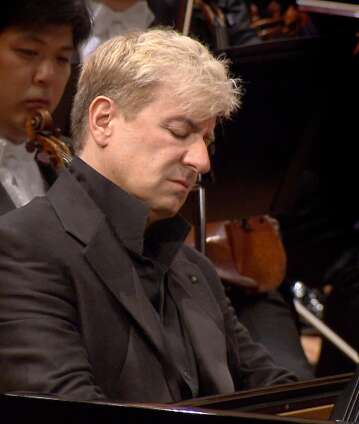Tugan Sokhiev and Jean-Yves Thibaudet

Although French music often comes across as rather fragile, there are also powerful counterexamples. Thus, César Franck’s D minor Symphony and Gabriel Fauré’s Pelléas et Mélisande radiate – besides French flair – a Beethovenian will to find the right form. Maurice Ravel, in contrast, strikes a crisp, jazzy tone in the Finale of his G major piano concerto, as one might more readily expect from Gershwin. Tugan Sokhiev conducts; at the piano is Jean-Yves Thibaudet.
“Unfortunately,” says Tugan Sokhiev, “conductors are inundated with clichés, and not just we Russian ones. Italian conductors are supposed to first be able to conduct Italian repertoire, German composers German pieces. Why is that? […] If I have something special to say about Russian music, then it’s because of my very deep relationship to a specific piece. But I may be able to say just as much to one by Brahms or Strauss.” And about works of the French repertoire, with which Tugan Sokhiev guest conducted the Berliner Philharmoniker in the 2015/16 season!
The programme includes Gabriel Fauré’s Pelléas et Mélisande – an orchestral suite written in 1898 from the incidental music for Maurice Maeterlinck’s symbolist drama of the same name; its modal harmonies completely fit the archaism of the action. Its final form took shape only about 20 years after its composition, as Fauré expanded the work to include the Sicilienne, the fifth of the pieces in the stage music. In this form Pelléas et Mélisande developed into one of the Fauré works that is played most often, whereby the original stage music continues to be used for performances of the drama. In addition, Jean-Yves Thibaudet, “surely the coolest pianist on the planet” (The Herald), takes on Maurice Ravel’s G major Piano Concerto – music that just sparkles with esprit in which shimmering cascades of sound, “the nasal tattoo of jazz” (Alexis Roland-Manuel), syncopated accents and sudden fanfare sounds are swirled around in pulsating motion.
After the interval, Tugan Sokhiev presents his interpretation of César Franck’s D minor Symphony. In its first movement, the French composer fools his listeners harmonically with a “double tonality” shimmering between D minor and F minor; the slow movement and the Scherzo are fused into a single Allegretto; and the Finale takes up the themes exposed in the previous movements like a recapitulation in the sense of the French “forme cyclique”.
© 2016 Berlin Phil Media GmbH
Related interviews